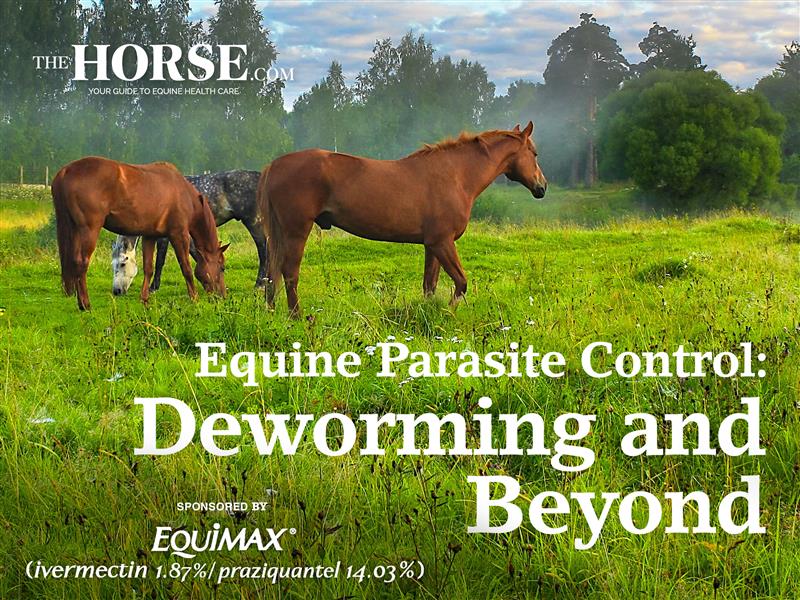
Equine Innovators: West Nile Virus in Horses—Risks, Signs, and Prevention
Horses still face the threat of West Nile virus. Dr. Sally DeNotta shares how it spreads, what signs to watch for, and why vaccination and mosquito control matter every year.
How to care for the basic health needs of horses

Horses still face the threat of West Nile virus. Dr. Sally DeNotta shares how it spreads, what signs to watch for, and why vaccination and mosquito control matter every year.

Listen to this episode of Ask TheHorse to learn how to prepare for equine health emergencies logistically and financially. Sponsored by CareCredit.

Dr. Lindsey Boone will describe myths, mechanisms, and methods of regenerative therapies for equine musculoskeletal injuries in this presentation. Tune in to learn more.

The diagnostic tests veterinarians use are evolving to improve how we manage infectious diseases in horses.

Learn how equine veterinary clinics institute strict biosecurity measures to contain, prevent, and control disease outbreaks.

If your horse struggles to keep weight on in summer, here’s how to safely increase his calories.

Get practical strategies for managing stallions that support their social needs and improve welfare.

What scientists are learning about equine parasite resistance to dewormers and how to curb it. Sponsored by Bimeda.

Scientists believe feeding horses a high-protein meal shortly after exercise could improve muscle health and growth; however, more research is needed.

As storms approach, horse owners should prepare with updated plans, ID, vaccinations, and emergency supplies.

Healthy, well-maintained hooves can remain strong and functional for decades—supporting horses from their first wobbly steps to their final years. Read more in The Horse‘s Older Horse 2025 issue.

Electrolyte loss through sweat can lead to dehydration, fatigue, and poor recovery. Here’s how to support your horse’s health during work and warm weather.

Expanding tick ranges and emerging pathogens are increasing the risk of tick-borne diseases in horses. Learn what researchers and vets say about protecting your horse.

Where do free radicals come from, and how do antioxidants regain control of these wayward molecules? We answer these questions and more.

Read about how Mindful, a 21-year-old Hanoverian gelding, stayed competitive at the highest levels in The Horse‘s Older Horse 2025 issue.

Joint injections can be complicated by a horse’s age, purpose, and health. Here’s how veterinarians approach various scenarios.
Stay on top of the most recent Horse Health news with
"*" indicates required fields